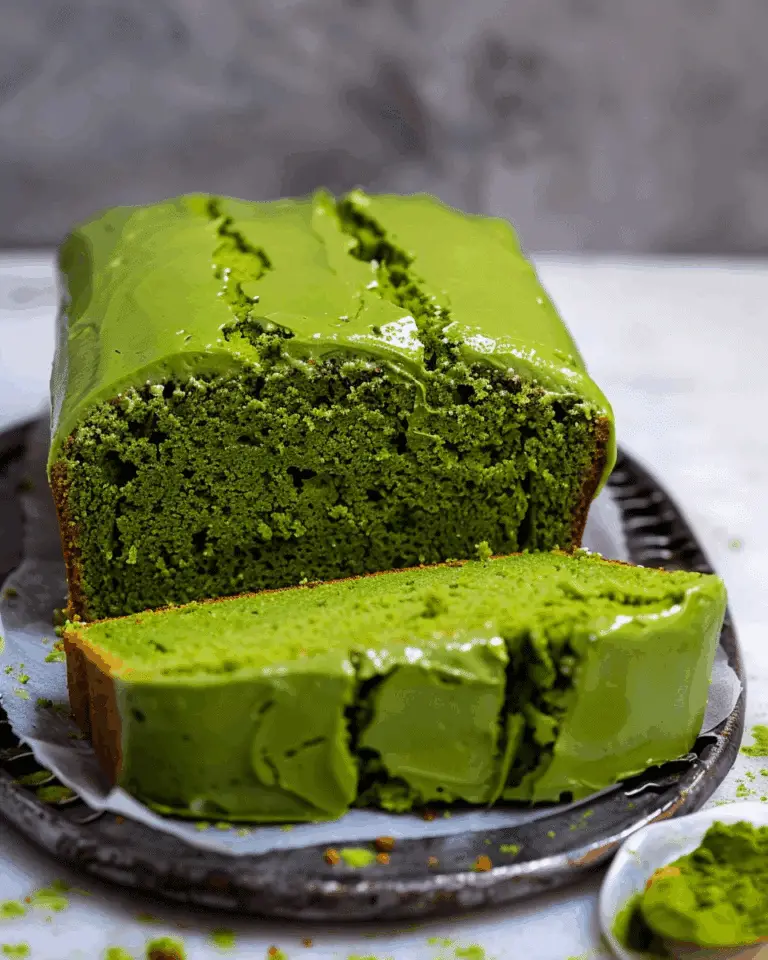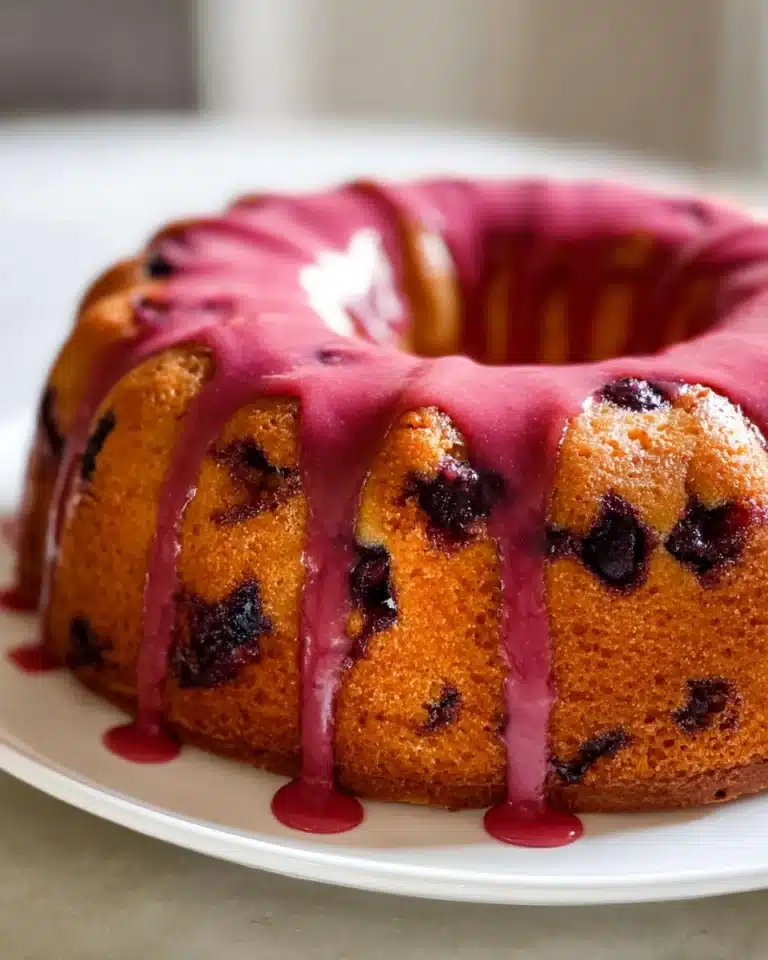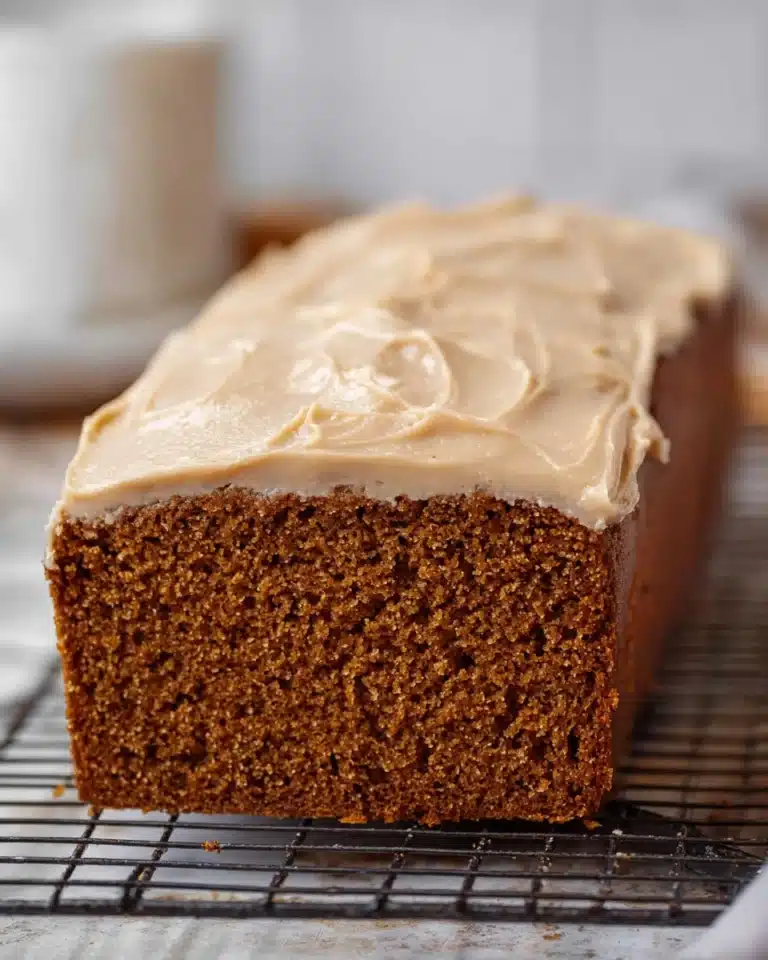Polish Pleśniak Cake is a delightful dessert featuring layers of shortcrust pastry, a tangy fruit mixture, and a soft, airy meringue topping. This traditional Polish treat is not only delicious but also visually impressive, making it perfect for any special occasion or family gathering. The combination of sweet and tart flavors with a crisp and light texture will leave everyone asking for seconds.
Why You’ll Love This Recipe
Polish Pleśniak Cake offers a perfect balance of flavors and textures. The buttery shortcrust pastry serves as a sturdy base, while the tangy fruit layer, typically made from berries or sour cherries, adds a refreshing zest. The soft, airy meringue topping and chocolate-infused dough crumbs complete the dessert, offering an indulgent and satisfying treat. With easy-to-follow steps and a bit of patience, this cake will elevate any dessert table.
Ingredients
-
3¾ cups (470 g) all-purpose/plain flour
-
1⅓ teaspoons baking powder
-
⅓ cup (50 g) confectioners’/icing sugar
-
¼ teaspoon fine sea salt
-
2 sticks + 2 tablespoons (250 g) butter (chilled, cubed)
-
2 tablespoons yogurt (plus 1 teaspoon, chilled)
-
2 teaspoons vanilla extract
-
5 large eggs (separated, at room temperature)
-
2½ tablespoons cocoa powder
-
2 tablespoons potato starch
-
1 cup + 1 tablespoon (200 g) superfine/caster sugar
-
1.1 pounds (500 g) mixed tart fruits (e.g., red/black currants, berries, sour cherries, frozen or fresh)
-
20 prunes (pitted, finely chopped)
(Tip: You’ll find the full list of ingredients and measurements in the recipe card below.)
Instructions
-
Make the fruit mixture: Cook the fresh or frozen fruit with prunes over medium heat for about 20 minutes, stirring often, until most of the moisture has evaporated. Puree the fruit mixture, then set it aside to cool.
-
Make the pastry: In a food processor, combine the flour, baking powder, salt, confectioners’ sugar, and butter. Pulse until the mixture resembles fine breadcrumbs. Add the egg yolks, 2 tablespoons of yogurt, and vanilla extract. Pulse until the mixture comes together into dough.
-
Tip: Alternatively, you can make the pastry by hand.
-
-
Chill the pastry: Form the dough into a thick log and cut it in half. Cut one half into two equal parts. Place one of these small parts in a bowl, flatten it, and knead in the cocoa powder and 1 teaspoon of yogurt. Place all the dough parts in the freezer for 30 minutes.
-
Tip: Preheat the oven to 375°F (180°C/160°C fan/gas mark 4) after 15 minutes.
-
-
Blind bake the crust: Remove the large dough from the freezer and slice it into thin pieces (4-5 mm). Spread the slices evenly over the bottom of the pan. Press the dough down gently, piercing it all over with a fork. Bake for 14 minutes, then remove from the oven and set aside to cool.
-
Tip: If your pan isn’t non-stick, grease it lightly and dust with flour or line with parchment paper.
-
-
Add the fruit layer: Spread the cooled fruit mixture evenly over the baked crust.
-
Add chocolate pastry: Coarsely grate the chocolate dough over the fruit layer. Pat gently to level it out, then refrigerate.
-
Tip: If your oven was turned off after baking, preheat it again to 325°F (170°C/150°C fan/gas mark 3).
-
-
Make the meringue: Place the egg whites in a clean, dry bowl. Add a pinch of salt and beat for about a minute, starting on a low speed. Gradually increase the speed to medium, beating until the mixture looks bubbly but not stiff. Slowly add the sugar in heaped tablespoons, mixing for a minute after each addition. After all the sugar is added, beat for 2 more minutes until thick and glossy. Sift the potato starch over the meringue and fold it in using the lowest speed.
-
Assemble the cake: Remove the pan from the fridge and gently spread the meringue over the chocolate dough. Coarsely grate the remaining dough over the meringue layer.
-
Bake: Bake the cake in the center of the oven for 50 minutes. Then lower the temperature to 300°F (150°C/gas mark 2) and bake for another 10 minutes. Turn off the oven and leave the pleśniak in the oven to cool completely for 1.5-2 hours. Do not open the oven door during baking and cooling.
-
Tip: The top of the cake might appear a little uneven, but that’s normal.
-
Details
-
Prep Time: 30 minutes
-
Cook Time: 1 hour 14 minutes
-
Total Time: 2 hours 14 minutes
-
Yield: 15 squares
Category:
Dessert
Method:
Baking
Cuisine:
Polish
Diet:
Vegetarian
Variations
-
Different fruits: You can experiment with different tart fruits like rhubarb, gooseberries, or even cranberries in place of currants or cherries for a different flavor profile.
-
Jam: If you’re short on fresh fruit, you can use red or black currant jam, but ensure it’s thick and not runny.
-
Spiced version: Add cinnamon or nutmeg to the dough for an extra layer of flavor.
Storage/Reheating
-
Storage: Cover the pleśniak cake with a tea towel and keep at room temperature for up to 2 days. After that, store it in a cool place for up to 2 more days.
-
Freezing: The cake can be frozen for up to 3 months. Just wrap it tightly in plastic wrap and place it in an airtight container.
FAQs
1. Can I use frozen fruits instead of fresh?
Yes, frozen fruits work perfectly in this recipe. Just make sure to cook them until the moisture has mostly evaporated before pureeing.
2. Can I make this cake gluten-free?
Yes, you can use a gluten-free all-purpose flour blend in place of regular flour, but the texture may differ slightly.
3. How can I tell when the meringue is ready?
The meringue should be thick and glossy, and it should form soft peaks. Be careful not to overbeat, as it could turn grainy.
4. Can I use a different type of sugar in the meringue?
You can use granulated sugar instead of superfine/caster sugar, but superfine sugar helps achieve a smoother meringue texture.
5. How do I prevent the meringue from cracking?
To prevent cracking, make sure to cool the cake slowly in the oven with the door closed. Also, avoid opening the oven door during the baking and cooling process.
6. Can I substitute the prunes with another fruit?
Yes, you can substitute prunes with other dried fruits, like raisins or dried cherries, for a different flavor.
7. Can I skip the cocoa powder in the dough?
You can skip the cocoa powder if you prefer a plain dough, but it adds a lovely chocolatey flavor that complements the fruit.
8. How do I store leftovers?
Store leftovers in an airtight container at room temperature for up to 2 days or in the fridge for up to 4 days.
9. Can I prepare the cake in advance?
Yes, this cake can be prepared in advance and stored in the fridge or freezer. It’s perfect for making ahead of time for a party or gathering.
10. Can I bake this cake in a different size pan?
You can adjust the pan size, but be mindful of the baking time. A smaller pan will result in a thicker cake, while a larger pan may require a shorter baking time.
Conclusion
Polish Pleśniak Cake is a beautiful and delicious dessert that combines layers of shortcrust pastry, tangy fruit, and a fluffy meringue topping. It’s perfect for any occasion, from casual family dinners to more formal gatherings. With its unique flavors and textures, this traditional Polish treat is sure to impress your guests and become a new favorite in your baking repertoire.
PrintPolish Pleśniak Cake
Polish Pleśniak Cake is a delightful dessert combining buttery shortcrust pastry, tangy fruit, and a soft meringue topping. This traditional Polish cake is visually impressive and perfect for any occasion. The crisp pastry, flavorful fruit layer, and airy meringue make it a crowd-pleasing treat that everyone will love. Perfect for family gatherings, special occasions, or when you want to impress with a homemade dessert.
- Prep Time: 30 minutes
- Cook Time: 1 hour 14 minutes
- Total Time: 2 hours 14 minutes
- Yield: 15
- Category: Appetizer
- Method: Baking
- Cuisine: American
Ingredients
3¾ cups (470 g) all-purpose/plain flour
1⅓ teaspoons baking powder
⅓ cup (50 g) confectioners’/icing sugar
¼ teaspoon fine sea salt
2 sticks + 2 tablespoons (250 g) butter (chilled, cubed)
2 tablespoons yogurt (plus 1 teaspoon, chilled)
2 teaspoons vanilla extract
5 large eggs (separated, at room temperature)
2½ tablespoons cocoa powder
2 tablespoons potato starch
1 cup + 1 tablespoon (200 g) superfine/caster sugar
1.1 pounds (500 g) mixed tart fruits (e.g., red/black currants, berries, sour cherries, fresh or frozen)
20 prunes (pitted, finely chopped)
Instructions
- Prepare the Fruit Mixture: Cook the fruit and prunes over medium heat for about 20 minutes until most of the moisture evaporates. Puree and set aside to cool.
- Make the Pastry: In a food processor, combine flour, baking powder, salt, confectioners’ sugar, and butter. Pulse until it resembles breadcrumbs. Add egg yolks, yogurt, and vanilla extract, and pulse until the dough forms.
- Chill the Dough: Split the dough, knead cocoa powder and yogurt into part of it, and freeze for 30 minutes.
- Blind Bake the Crust: Roll out the large dough and line the pan. Pierce the dough with a fork and bake at 375°F (180°C) for 14 minutes. Set aside to cool.
- Layer with Fruit: Spread the cooled fruit mixture over the baked crust.
- Add the Chocolate Pastry: Grate chocolate dough over the fruit and refrigerate.
- Make the Meringue: Beat egg whites with sugar until glossy, then fold in potato starch. Spread over the chocolate dough.
- Bake: Bake at 325°F (170°C) for 50 minutes, then reduce to 300°F (150°C) for another 10 minutes. Turn off the oven and cool for 1.5-2 hours.
Notes
- Tip: The meringue should be glossy but soft, not over-beaten.
- Alternative: Use rhubarb, gooseberries, or cranberries in place of tart fruits for a different flavor.








